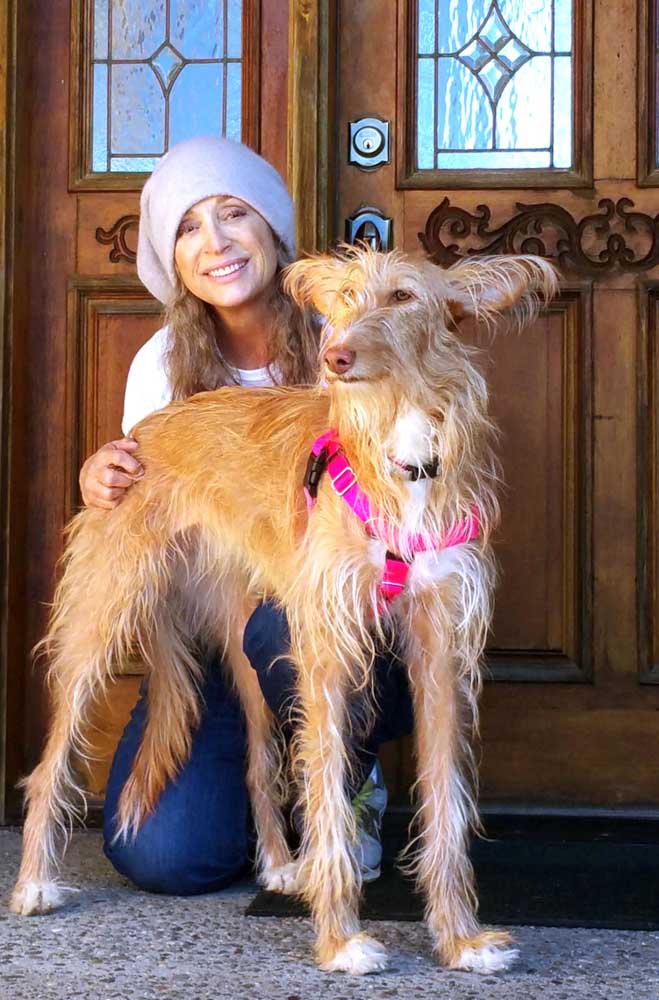Canine Corner: Summer safety for your best friend
Published 10:19 am Tuesday, July 9, 2019

- Rain Jordan of Expert Canine with Dahlia.
By RAIN JORDAN
For Seaside Signal
People love their dogs and therefore love their dogs’ company on outings. But we hear a lot about how dangerous hot cars are—do we really believe or understand that claim? Let’s look to the experts for facts.
The American Veterinary Medical Association explains that the temperature inside a vehicle rises about 20 degrees in ten minutes and 30 degrees in twenty minutes. In an hour, the temperature in a vehicle is more than 40 degrees higher than the outside temperature. In other words; if it’s 70 degrees outside, it is probably more than 110 degrees in your car. Furthermore, the AVMA states, cracking the windows makes no difference. So let your dog stay safe and cool in your home while you do your shopping and other errands.
There are additional risks to dogs left in cars. One is that if the owner should have a medical or other emergency while on a quick errand and become unable to communicate, the dog could be stranded in the car long-term rather than just for a few minutes. Another is that anytime we leave our dogs alone in public, they are at the mercy of that public, and that’s just not a gamble worth taking. You may recall from one of my previous articles that about a third of the population is cynophobic — that is, is afraid of or has disdain for dogs.
Another summertime risk of dogs in cars isn’t as common, thankfully, but does happen, and would be extremely traumatizing. There have been cases where dogs have fallen — or jumped — out of partly or fully open windows of moving cars, sometimes still attached by their leashes to something in the car. It happens more frequently when dogs are allowed to ride in open air vehicles such as convertibles and pick up truck beds. Whether the dog is loose or tethered, serious injury or worse is the result. Road curves and bumps that increase fall risk cannot be avoided, nor can things that might tempt a dog to jump, so keep windows up, and don’t let your dog ride in convertibles or truck beds. No A/C? Only have a pick up or convertible? The AVMA would again suggest letting your dog stay home, since there are many other risks, including flying debris and organic airborne hazards, to dogs who travel with their heads outside a vehicle, whatever the season.
At the beach, lake, river, or other water source with a dog who loves the water, try to be sure that s/he doesn’t swallow a lot of water while swimming or playing. You already know that drinking salt water isn’t good for dogs. You may have heard of water intoxication, but if not, do a little research on the topic before your dog begins water play. It appears a dog might ingest too much water by simply playing in or with water, leading to acute water intoxication, reportedly an uncommon but deadly illness. Ask your vet for guidance.
Perhaps your dog prefers to luxuriate with you under the beach umbrella and a spread of snacks. In that case, one surprising safety rule has to do with snack bags. Unfortunately, pets can quickly suffocate in potato chip bags and similar wrappers (yes, including pet food bags). At home the best safety rule is to cut off both ends of every bag before disposing of it so that if a bag should fall into your pet’s paws and s/he noses into it, suffocation will not be as likely. If you are not up for bringing mini-scissors to the beach, another option might be to use your cooler to contain all bags, including grocery bags, until you get home to your scissors. For increased safety, place chips and other snacks in a bowl rather than eat from bags, and keep the bags in the cooler.
Staycationer? Before you walk your dog, check the temperature and the ground to make sure both are cool enough. Personally, I prefer 70 degrees or less for dog-walking, because some dogs just don’t handle heat and exercise together very well. If your dog’s a sunbather, manage that too, because many dogs don’t know when they’ve had too much and will overheat themselves. Not sure? Ask yourself: Would I enjoy a long stretch of this activity in a fur coat, fur hat, and bare feet?
And watch for panting.
Rain Jordan, CBCC-KA, KPA CTP, is a certified canine behavior and training professional. Visit her at www.expertcanine.com.


